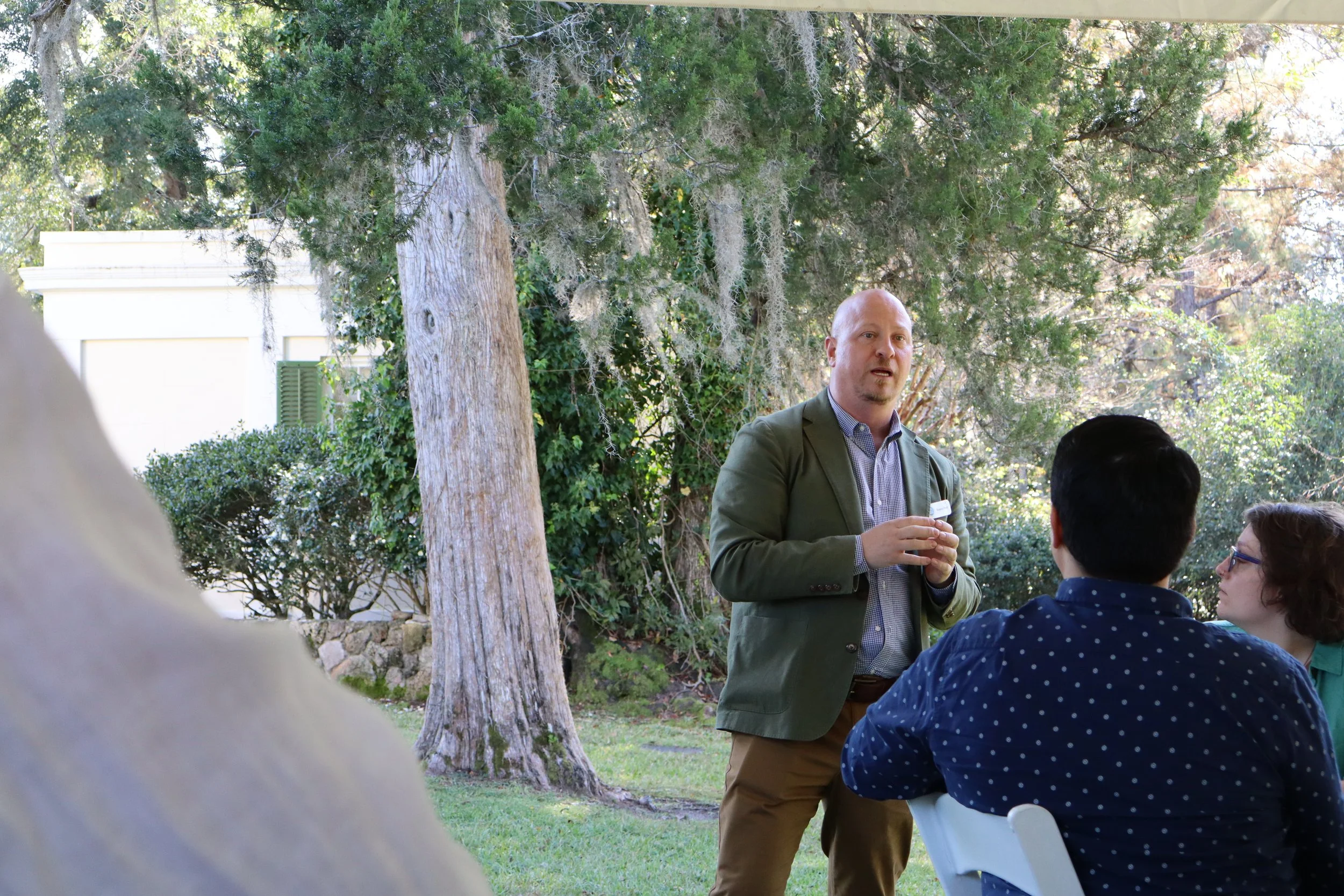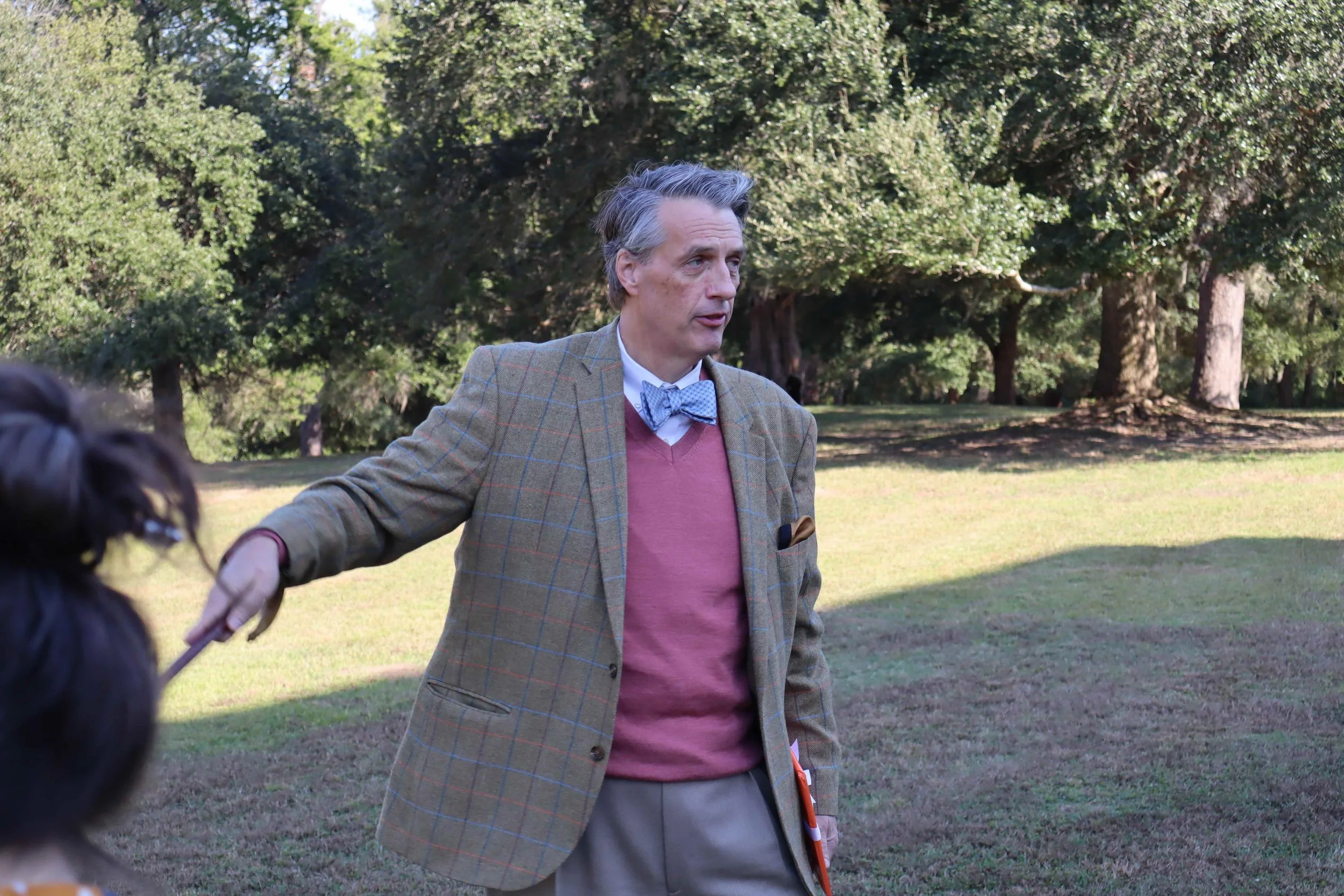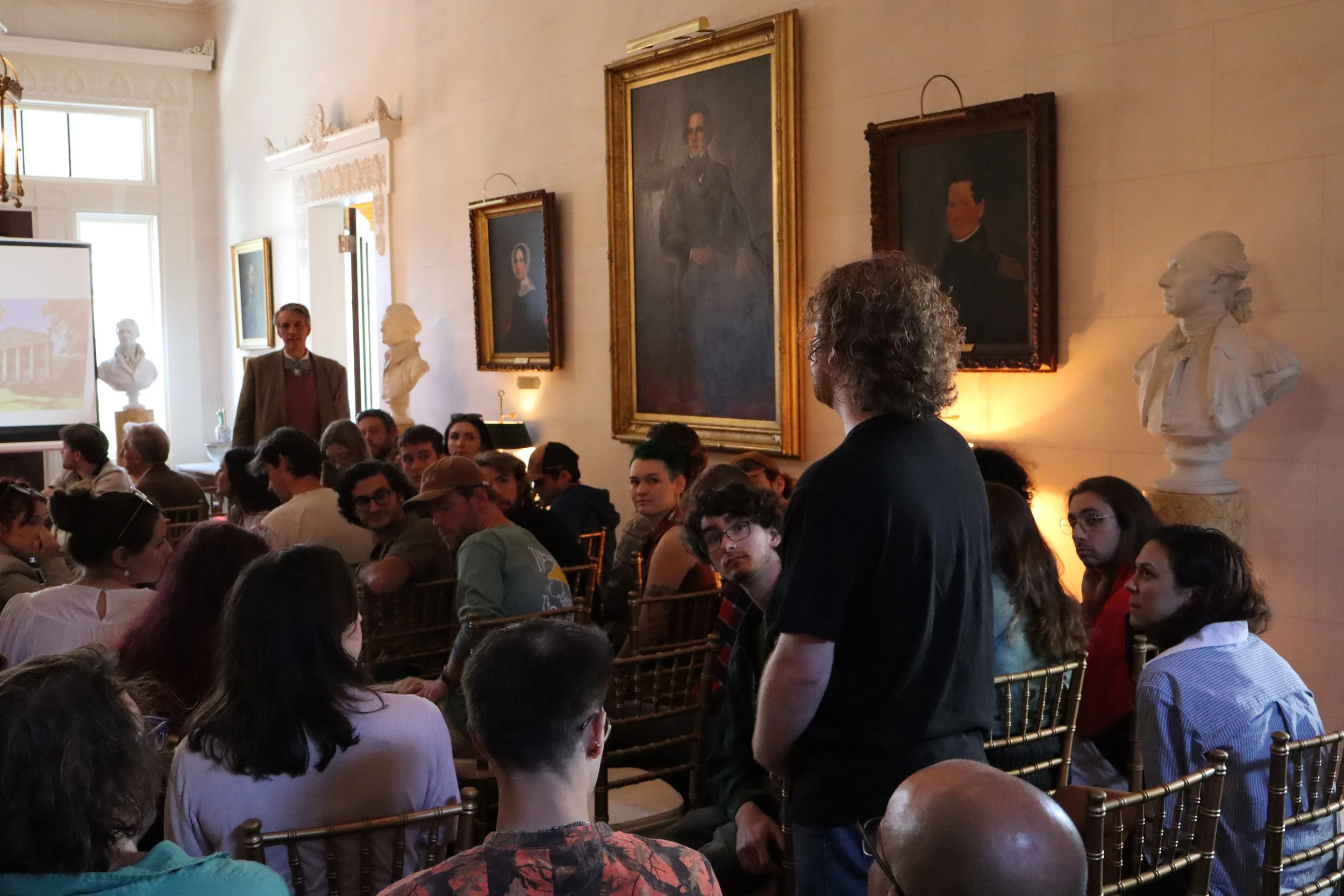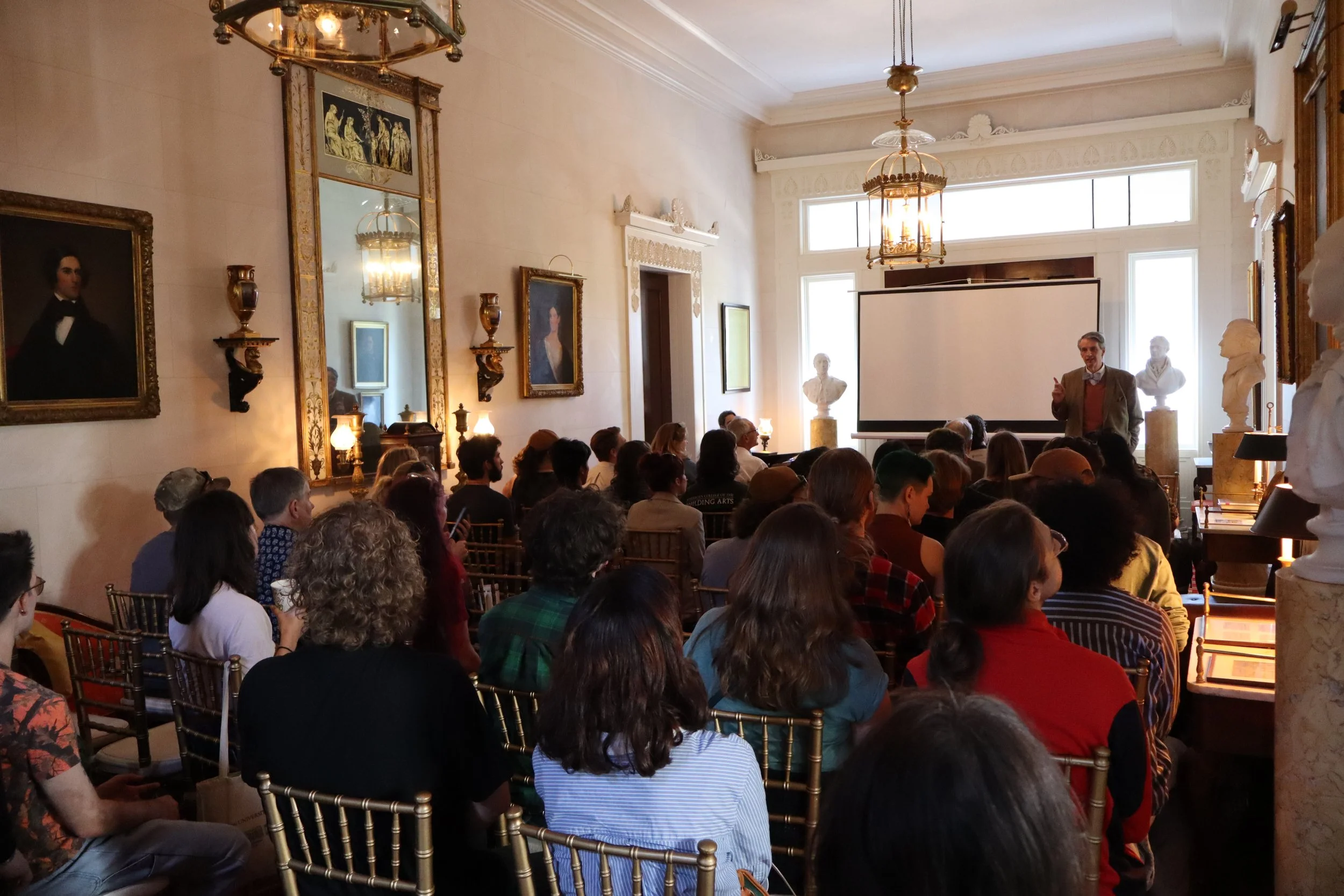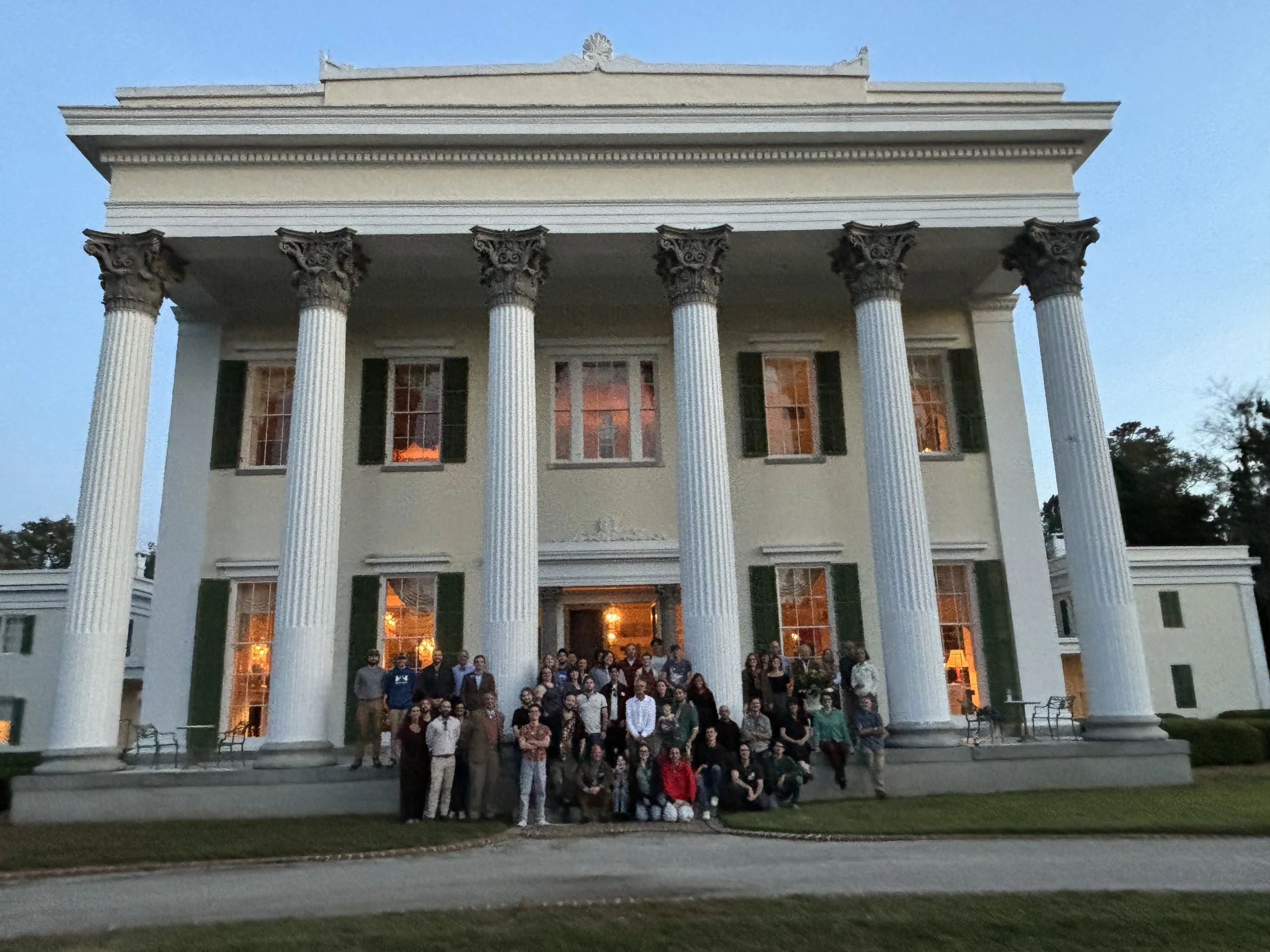Millford Student Day highlights history and tradecraft for students and experts
Author: William Richards, Ph.D.
Over the course of the day, the Jenrette Foundation’s Director of Operations Joseph Beatty led tours of Millford, originally commissioned by John Laurence Manning and Susan Hampton Manning and built between 1839 and 1841. It is considered one of the finest examples of Greek Revival residential architecture in the United States.
Millford was designed by Rhode Island architect and builder Nathanial F. Potter, and declared a National Historic Landmark in 1973.
On November 9, 2024, students of preservation, history, and the building trades gathered at the Jenrette Foundation’s Millford in Sumter County, South Carolina for a day of tours and demonstrations by leading experts.
More than three dozen students from four schools around the country attended—among them many former Jenrette Foundation interns and externs—from the preservation and historic trades programs at Tulane University, the University of South Carolina, Clemson University, and the American College of Building Arts in Charleston. Millford Student Day convened emerging scholars, seasoned academics, and preservation’s practitioners around a range of topics from how technology can alter the ways in which we have interpreted historic properties, to the transmission of trade skills from generation to generation, to the power of storytelling to capture how things were built, by whom, to what end.
Over the course of the day, the Jenrette Foundation’s Director of Operations Joseph Beatty also led tours of Millford, originally commissioned by John Laurence Manning and Susan Hampton Manning and built between 1839 and 1841. It is considered one of the finest examples of Greek Revival residential architecture in the United States, which was designed by Rhode Island architect and builder Nathanial F. Potter, and declared a National Historic Landmark in 1973. Beatty’s tours spared no detail, including the largest collection of Duncan Phyfe furniture in the world to be housed in one place, not to mention a set of pocket doors thought to be the only ones of their kind in the world.
Dendochronologist Mick Worthington of Oxford Tree-Ring Laboratory, who worked closely with Jenrette Foundation's Director of Historic Preservation Will Hamilton to restore Millford’s stable, offering another side of the story of life at Millford.
“What I like about dendochronology is that it's about storytelling, and I think storytelling is the only way you get the general public interested. Why should I look at this thing? Why should we save these things?” says Worthington, “What we do is we change the story of buildings.”
Brockington Associates’ Ralph Bailey led the group on a walkabout of the Millford property to discuss cultural resources management, and preservation carpenter Nathanael Ulfers and the Webb Deane Stevens Museum’s Director of Preservation and Collections T.R. Ravella Hamilton spoke about another Jenrette Foundation—historic Edgewater in Barrytown, New York—and the challenges (and triumphs) of restoring the library’s skylight. Among them, said Ulfers, is the degree to which we underestimate the sheer weight of glass and the delicate process of lowering a skylight into place, which is not easy under normal circumstances, nevermind over the roof of an A.J. Davis addition.
Glass appeared again in a different guise at the center of the Menokin Foundation’s efforts to reconstruct the Francis Lightfoot Lee House, a 1769 manor house largely in ruin but sitting at the intersection of preservation technologies and innovative methodologies. Menokin’s Executive Director Connie Rosemount and Senior Architectural Historian with the Virginia Department of Historic Resources Calder Loth explained the thorny choices they have faced—and continue to face—for Menokin’s future. For Rosemount, the Millford Student Day was an opportunity to share, but also participate in preservation’s larger community.
“In convening this group, the Jenrette Foundation has figured out the people who are very active in a space who might have similar interests or similar interpretive approaches to preservation—maybe approaches that are a little bit out of the box,” says Menokin’s Rosemount, “and so for us to be invited here, I think it just allows me to feel that we're not alone.”
Concluding the day’s talks, Tulane University’s Professor of Practice in Historic Preservation Heather Veneziano drew together the day’s themes of interpretation and the challenges of choosing a course of action in her team’s restoration of abandoned graves at St. Louis Cemetery #1 in New Orleans.
“The Jenrette Foundation brings together the best people who are knowledgeable,” says Veneziano, “and that's really when the magic happens because you meet people and you meet your future collaborators—it's so valuable.”
A week prior to Millford’s Student Day, Veneziano and her students convened a special meeting at Tulane to discuss a Jenrette Foundation-funded report about labor issues in the historic trades—in particular, the gaps that have been emerging for decades between numbers of skilled craftspeople and increasing demand for their expertise.
For the Jenrette Foundation, the link between architecture’s purpose and its labor force is not just a timely one to discuss, but an integral one to shaping our understanding of how buildings, landscapes, and decorative objects were made in the first place. Central to the Student Day’s goals was an effort to cross-pollinate historic preservation and historic trades, such as carpentry and masonry, offering attendees from each of those broad camps an opportunity to forge connections.
“The work we heard about and experienced in-situ at Millford was informed by thoughtful choices from a range of talented historians, preservationists, and trades-people” says Jenrette Foundation’s President Benjamin Prosky. “For the Jenrette Foundation, this gathering is about creating unique learning opportunities for students and about forging new links between them and professionals. It is integral to the foundation's dedication to foster an incredibly important conversation on the future of historic preservation, decorative arts, and historic landscapes.”



